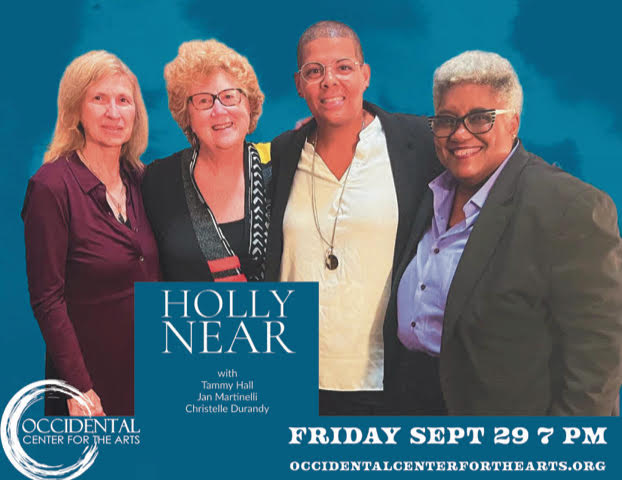FEATURE FILMS
The Disappearance of Shere Hite (US, documentary feature, dir. Nicole Newnham) Shere Hite’s
1976 bestselling book, The Hite Report, liberated the female orgasm by revealing the most private
experiences of thousands of anonymous survey respondents. Her findings rocked the American
establishment and presaged current conversations about gender, sexuality, and bodily autonomy.
So how did Shere Hite disappear?
Fancy Dance (US, narrative feature, dir. Erica Tremblay) Following her sister’s disappearance, a
Native American hustler (Lily Gladstone, The Unknown Country, MVFF 2022) kidnaps her niece
from the child’s white grandparents and sets out for the state powwow in hopes of keeping what is
left of their family intact. Ages 15+ – Bay Area Premiere
Housekeeping for Beginners (North Macedonia / Sweden / Kosovo / Poland / Serbia / Croatia,
narrative feature, dir. Golan Stolevsky) From acclaimed filmmaker Goran Stolevski comes a story
exploring the universal truths of family, both the ones we’re born into and the ones we find for
ourselves. Dita never wanted to be a mother, but circumstances force her to raise her girlfriend’s
two daughters, tiny troublemaker Mia and rebellious teen Vanesa. A battle of wills ensues as the
three continue to butt heads and become an unlikely family that must fight to stay together. In
Macedonian with English subtitles – US Premiere
Maestro (US, narrative feature, dir. Bradley Cooper) Maestro is a towering and fearless love story
chronicling the lifelong relationship between Leonard Bernstein (Bradley Cooper) and Felicia
Montealegre Cohn Bernstein (Carey Mulligan). A love letter to life and art, Maestro at its core is
an emotionally epic portrayal of family and love.
Monster (Japan, narrative feature, dir. Hirokazu Kore-eda) Japanese auteur Hirokazu Kore-eda
(Shoplifters, MVFF 2019) returns in this Rashomon-like tale of a troubling school incident that
proves much less clear-cut than initially believed. When her young son Minato starts to behave
strangely, his mother feels that there is something wrong. Discovering that a teacher is
responsible, she storms into the school demanding to know what’s going on. But as the story
unfolds through the eyes of mother, teacher and child, the truth gradually emerges. In Japanese
with English subtitles – West Coast Premiere
National Anthem (US, narrative feature, dir. Luke Gilford) Dylan (Charlie Plummer), a 21-year-
old construction worker in New Mexico, joins a community of queer rodeo performers in search of
their own version of the American dream. While working on a communal ranch in the breathtaking
and poetic expanse of the American Southwest, they contend with the undeniable powers of
nature, family, and love. – West Coast Premiere
Nyad (US, narrative feature, dirs. Jimmy Chin, Elizabeth Chai Vasarhelyi) From acclaimed
documentarians Elizabeth Chai Vasarhelyi and Jimmy Chin (The Rescue, MVFF 2021), Nyad
tells the remarkable true story of athlete Diana Nyad (Annette Bening) who, at the age of 60
and with the help of her best friend and coach (Jodie Foster), commits to achieving her life-
long dream: a 110-mile open ocean swim from Cuba to Florida.
The Persian Version (US, narrative feature, dir. Maryam Keshavarz) Coming from two countries
at odds with each other, Iranian-American Leila (Layla Mohammadi) strives to find balance and
embrace her opposing cultures, while boldly challenging the labels society is so quick to project
upon her. When her family reunites in New York City for her father’s heart transplant, Leila
navigates her relationships from arm’s length in an effort to keep her “real” life separate from her
family life. However, when her secret is unceremoniously revealed, so are the distinct parallels
between her life and that of her mother, Shireen (Niousha Noor). Winner of the U.S. Dramatic
Audience Award and Waldo Salt Screenwriting Award at the 2023 Sundance Film Festival. –
West Coast Premiere
Robot Dreams (Spain/France, animated feature, dir. Pablo Berger) Based on the popular graphic
novel by North American writer Sara Varon, Robot Dreams is the first animation film by the
award-winning director Pablo Berger (Blancanieves). A story about friendship, its importance, and
its fragility. DOG lives in Manhattan and he’s tired of being alone. One day he decides to build
himself a robot, a companion. Their friendship blossoms, until they become inseparable, to the
rhythm of 80’s NYC. One summer night, DOG, with great sadness, is forced to abandon ROBOT
at the beach. Will they ever meet again? Ages 10+ – California Premiere
Rustin (US, narrative feature, dir. George C. Wolfe) Bayard Rustin (Colman Domingo) was the
architect of 1963’s March on Washington. He challenged authority and never apologized for who
he was, but was forgotten despite making history. Rustin spotlights the man who, alongside
Martin Luther King Jr., dared to imagine a different world and inspired a movement. – West
Coast Premiere
Saltburn (US, narrative feature, dir. Emerald Fennell) Academy Award winning filmmaker
Emerald Fennell (Promising Young Woman) brings us a beautifully wicked tale of privilege and
desire. Struggling to find his place at Oxford University, student Oliver Quick (Barry Keoghan)
finds himself drawn into the world of the charming and aristocratic Felix Catton (Jacob Elordi),
who invites him to Saltburn, his eccentric family’s sprawling estate, for a summer never to be
forgotten.
SHORT FILMS
binary. (Milan Mackenzie Wood & Maddie Barbiee, US 2023, 14 min) In this intimate look into the
life of a young transgender person inspired by androgynous rockstars, a teen struggles to
understand who they really are while facing conflict with those around them.
Farther (Een Saam) (Josh Hundermark, South Africa 2022, 15 mins) A father faces some difficult
truths when he revisits the past with his daughter. In Afrikaans with English subtitles
Mist (Niebla) (Leonardo Romero Zarza, Colombia 2020, 10 min) When Nicolas and his family
move from the city to a new house next to a forest, his perception of his new environment starts
to change thanks to mysterious encounters with native animals. In Spanish with English subtitles
No More Longing (Connor Lee O’Keefe, US 2022, 16 mins) Seven years after moving from
Brazil to California to pursue his love of music and four years after starting testosterone, Jaime
Jobim searches for his new voice. In English & Portuguese with English subtitles
Once Was (Lilian Bowden, US 2023, 11 min) A reunion with a former romantic partner spurs a
moment of reflection.
An Ordinary Day (Ju-yeon Gim, South Korea 2023, 19 min) Two female friends — one blind, the
other in a wheelchair — find that this day they decided to spend together is anything but ordinary.
In Korean with English subtitles





